Propellers are designed to absorb a fluid (usually air or water) and use a rotational motion to propel the fluid through. In a sense, they are an evolution of the Archimedean screw, which was probably used in ancient Egypt for thousands of years before it was described by Archimedes in 234 BCE.
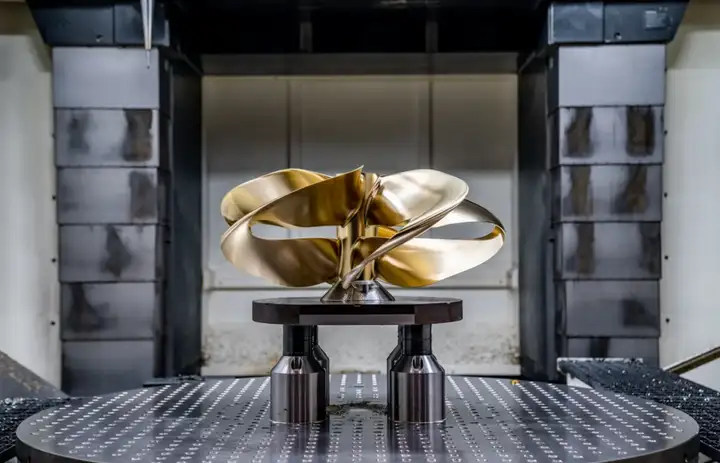
Toroidal propellers: a quieter, more efficient design that can reduce fuel consumption by up to 20% when retrofitted to marine engines
However, there have been few revolutionary design changes to equipment designed to spin for a long time. Propeller-driven aircraft still use twisted wing-blade propellers, similar in design to the bamboo dragonflies favored by Chinese children 2,400 years ago, with minimal efficiency gains over the wooden propellers developed by the Wright brothers in a wind tunnel in 1903. Variants of the ships that still use screw-type propellers date back to the 18th century.
As a result, we have found groups that claim they have demonstrated significant advantages in air and water using significantly different shaped propellers - specifically, strange twisted loops that appear to be not only much quieter than traditional designs, but also more efficient, especially in the ocean.
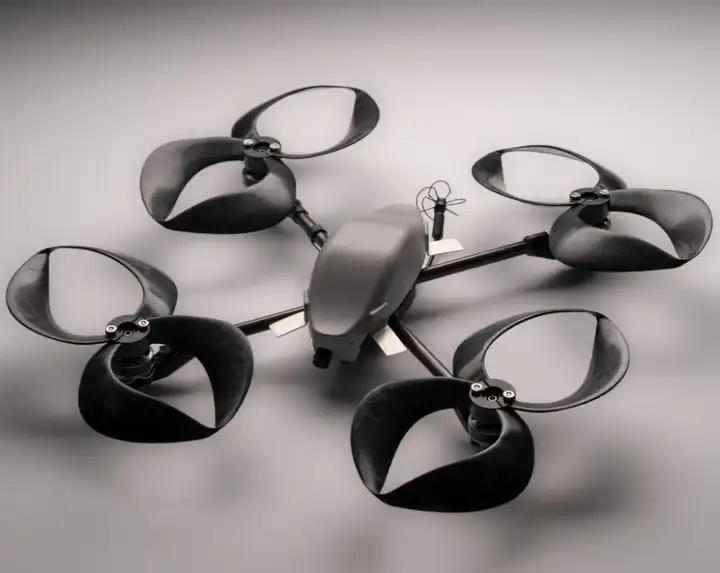
MIT's Ultra-Silent 3D Printed Toroidal Propeller Mounted on Commercial Drone for Testing
A potential game changer in the air
A key problem with multi-rotor propellers is their annoying noise, which is often described as a "whine" because much of it is in the same frequency range as a baby's cry. Humans tend to be most sensitive to sounds from about 100 Hz to 5 kHz. This is where we hear the key vowels of verbal communication. But noise will be a key issue if multi-rotor aircraft are to reach their potential and fill our skies with fast, economical, clean air delivery services.
"As we know, propellers are very loud," said Dr. Thomas Sebastian, a senior staff member in Lincoln Laboratory's structural and thermal fluid engineering group. "We can look at the wing and see how it works. In the early 20th century and during World War II, when people were coming up with ideas for airplanes, there were several designs that were basically these circular wings. So I wondered what it would look like if you took a circular wing and turned something similar into a propeller."
Sebastian continued, "We came up with the initial concept of using a toroidal wing shape in hopes of creating a quieter propeller. We took that concept and created a series of iterations using a 3D printer."
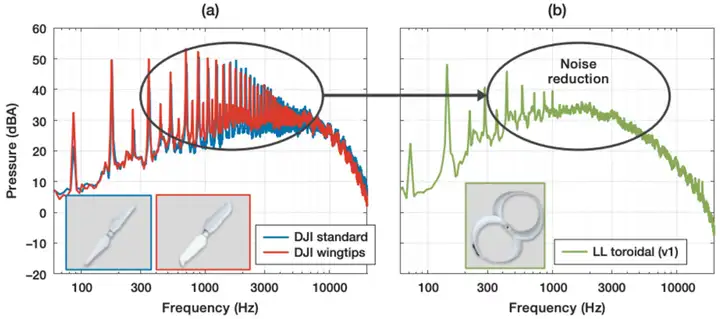
Maximum noise reduction happens where one needs it: in the 1-5 kHz frequency range
In several attempts, the team did find a design that not only reduced the overall noise level for a given thrust level, but also reduced the noise in the 1-5 kHz range.
In fact, they sounded more like a sharp breeze than a propeller, emitting a less intrusive sound. According to the team, a drone running these props makes about as much noise as a normal drone at twice the distance.
Sebastian said, "We think the key to making the propeller quieter is to distribute the vortex generated by the propeller over the entire shape, not just at the tip." "This makes it dissipate much faster in the atmosphere. Because the vortex doesn't travel as far, you're less likely to hear it."
Propeller noise can be addressed by placing acoustic treatment rings around the propeller path, which can also act as propeller guards from a safety standpoint. But these add parasitic mass and shorten battery life, and they can also be affected by wind in outdoor situations, making the drone need to work harder to remain stable.
The team analyzed these strange-looking ring struts to see if they would reduce thrust efficiency. Apparently not: The team's best performing B160 design was not only quieter at a given thrust level than the best standard propeller they had tested, but also produced more thrust at a given power level - which is remarkable, given that standard propellers are over a century old and the development behind them and these toroidal coils are at a very early stage and still need a lot of optimization.
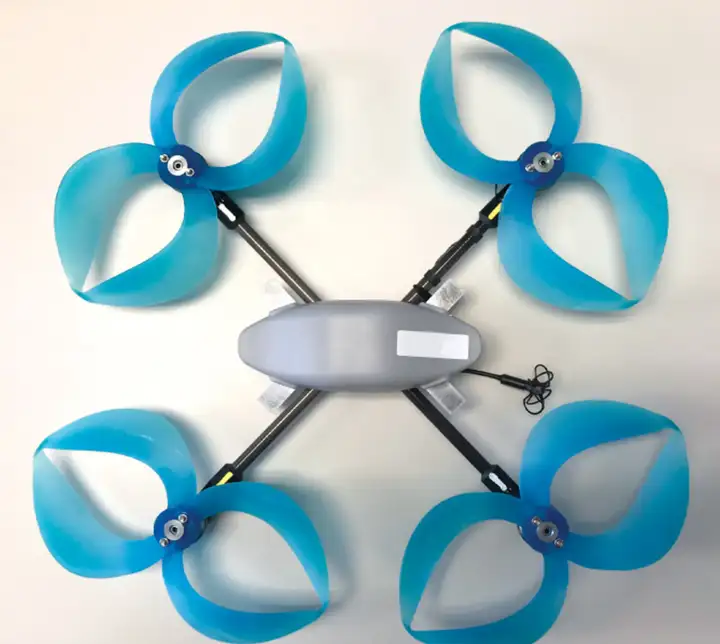
While the MIT team didn't spend much time optimizing these odd-looking propellers for efficiency, they have generated more thrust than standard propellers for a given power level.
More importantly, the toroidal shape not only increases structural stability, but also reduces the likelihood of being cut, pinched or jammed by the prop.
On the downside, because the shapes are quite complex, they are more difficult to manufacture than standard props that use cheap and simple injection molding. They may need to be made by 3D printing. But even if they cost two to three times as much as ordinary propellers, they are a low-cost component for drones.
It's unclear whether such a design would be suitable on a larger scale, replacing conventional propellers on fixed-wing aircraft or electric air cabs. The latter already seem much quieter than helicopters, but if they end up flooding urban airspace with fast, economical, green air vehicles, every extra decibel of noise will be especially important when it comes to public and regulatory resistance. Indeed, the question here is what frequencies these larger propellers will occupy in the audio spectrum, and whether the ring propellers move the sound in a human-friendly direction.
The team has filed a patent for the design, and while it is unclear if there are plans to commercialize it, MIT appears ready to license it to interested manufacturers.
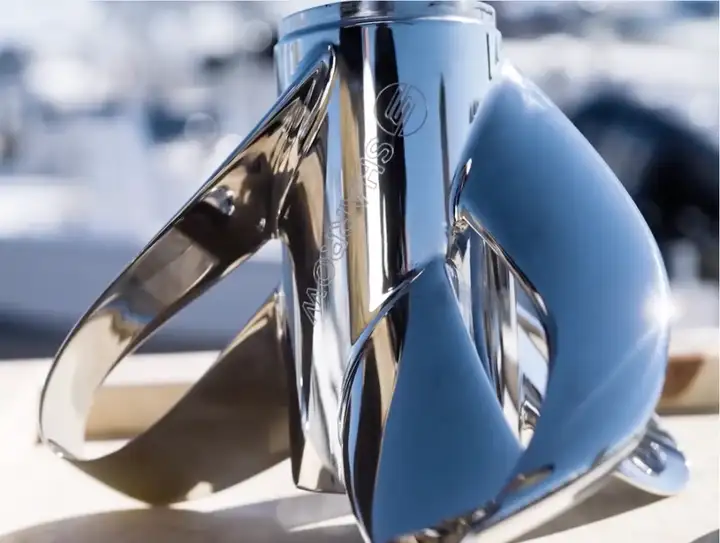
Sharrow's aftermarket ring propeller for a range of outboards: expensive, but with extraordinary benefits
Greater advantages in the water
Drones and aviation are one thing, but aerodynamics and hydrodynamics are closely related, and it turns out that there is already a near-production product in the marine space that takes a very similar approach.
Sharrow Marine has gotten amazing results from a boat propeller that uses rings instead of standard blades. After several years of development, the company has now tested its propellers with hundreds of standard propellers and the differences are incredible. Sharrow's propellers do not produce tip vortices at all - a major source of energy loss and a very large component of the overall noise of outboard engines.
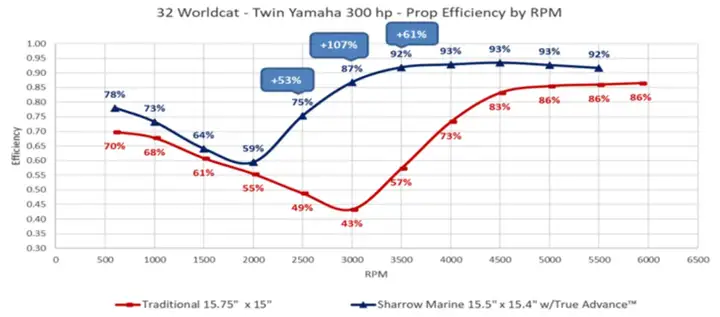
In mid-speed currents, the efficiency gains are absurd, filling an obvious hole in the boat's acceleration curve and saving a lot of energy
Toroidal propellers greatly reduce the amount of fluid that "slips out" of the propeller sides instead of being pushed in, thereby drawing more water in and moving the boat forward. They often double the speed of the boat at low to medium speeds, radically expanding the effective speed range of the motor. At the same time they reduce fuel consumption by about 20 percent - which would be a very large amount considering the huge energy demands of propeller-driven boats and the size of the industry.
Sharrow says they significantly reduce the tendency of the boat to pitch backwards during acceleration; instead, the entire boat rises out of the water while maintaining a higher level of performance. Most importantly, the impact on noise control is also far-reaching.
In fact, the company says this propeller, which can be mounted more or less on any outboard engine and then propelled quietly at 30 mph (48 km/h), allows people to talk on board without raising the volume.
Sharrow already sells its toroidal propeller, CNC machined to fit a variety of common outboard engines from most major manufacturers. The downside of the product is the price, as they cost $4,999 for either model, while a common propeller may cost just shy of $500. But again, this is a small component of the total cost of many boats, and given their voracious appetite for fuel, the expense may pay for itself in the short term while making the ride more comfortable for those on board.


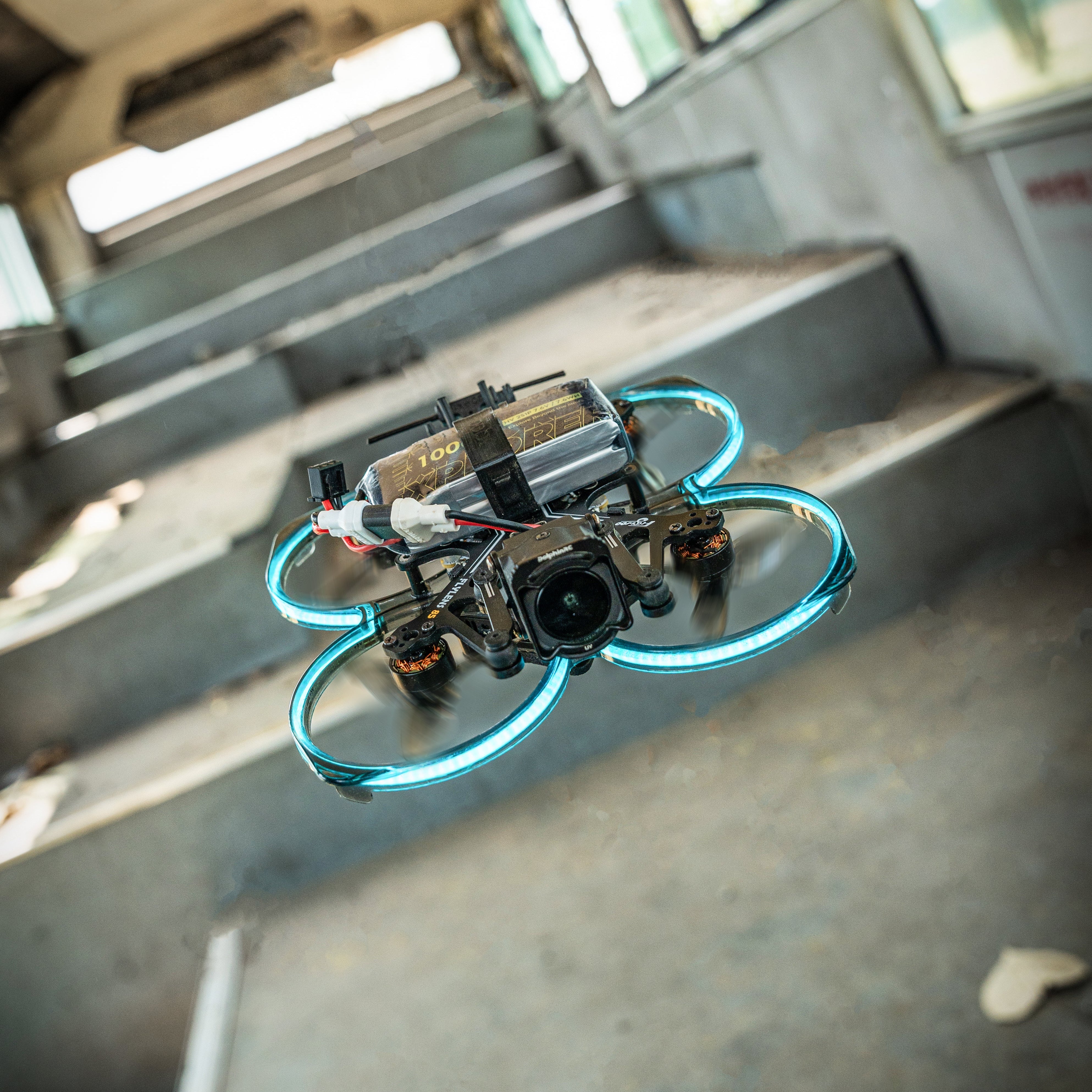
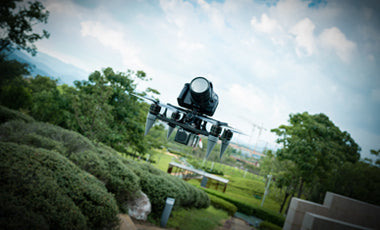

Leave a comment